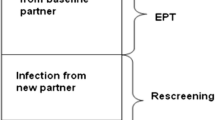Abstract
We performed a prospective randomized study to compare the potential genotoxic effects of metronidazole and nalidixic acid which they are used in the treatment of Trichomonas vaginalis infection. 20 patients with Trichomonas vaginalis infections participated in this study. 14 patients with vaginal trichomoniasis were treated with therapeutic doses of metronidazole 250 mg 3 times/d and six patients were treated with nalidixic acid 400 mg twice a day for 10 d. The genotoxic potential of a variety of mutagenic and carcinogenic agents can be evaluated by sister-chromatid exchange (SCE) test as a rapid cytogenetic test. An increased number of exchanges in lymphocytes reflects the influence of mutagens. No significant difference was observed in the SCE frequency of metronidazole treated patient however, a statistically significant increase (P<0.05) after nalidixic acid treatment could be described. We conclude that in spite of wide use of nalidixic acid for Trichomonas vaginalis infection, because of its potential genotoxic effect its usage must be individualized especially for pregnant women and small babies.
Similar content being viewed by others
Author information
Authors and Affiliations
Additional information
Received: 14 July 1999 / Accepted: 29 October 1999
Rights and permissions
About this article
Cite this article
Akyol, D., Mungan, T. & Baltaci, V. A comparative study of genotoxic effects in the treatment of trichomonas vaginalis infection: metronidazole or nalidixic acid. Arch Gynecol Obstet 264, 20–23 (2000). https://doi.org/10.1007/PL00007476
Issue Date:
DOI: https://doi.org/10.1007/PL00007476




